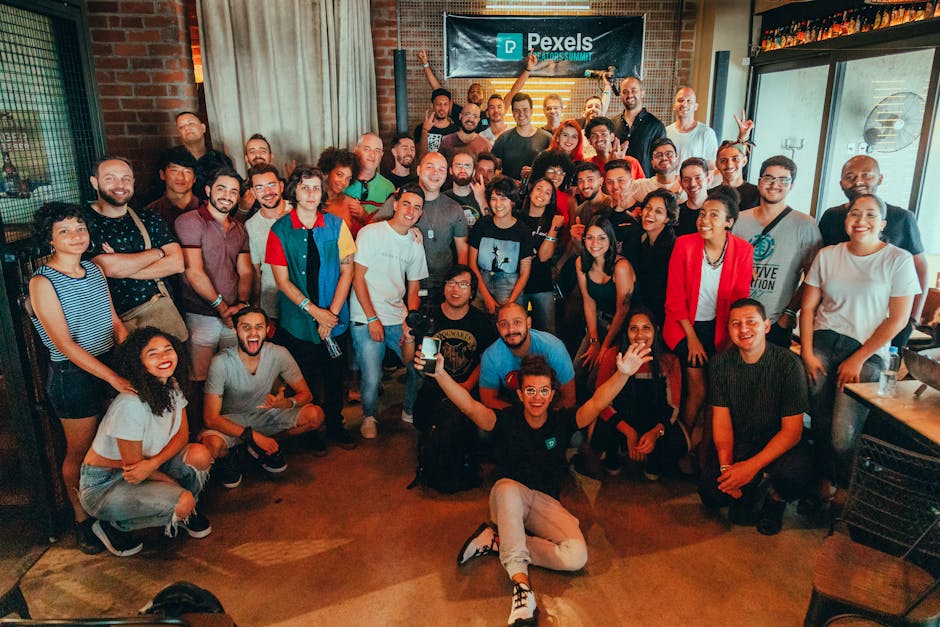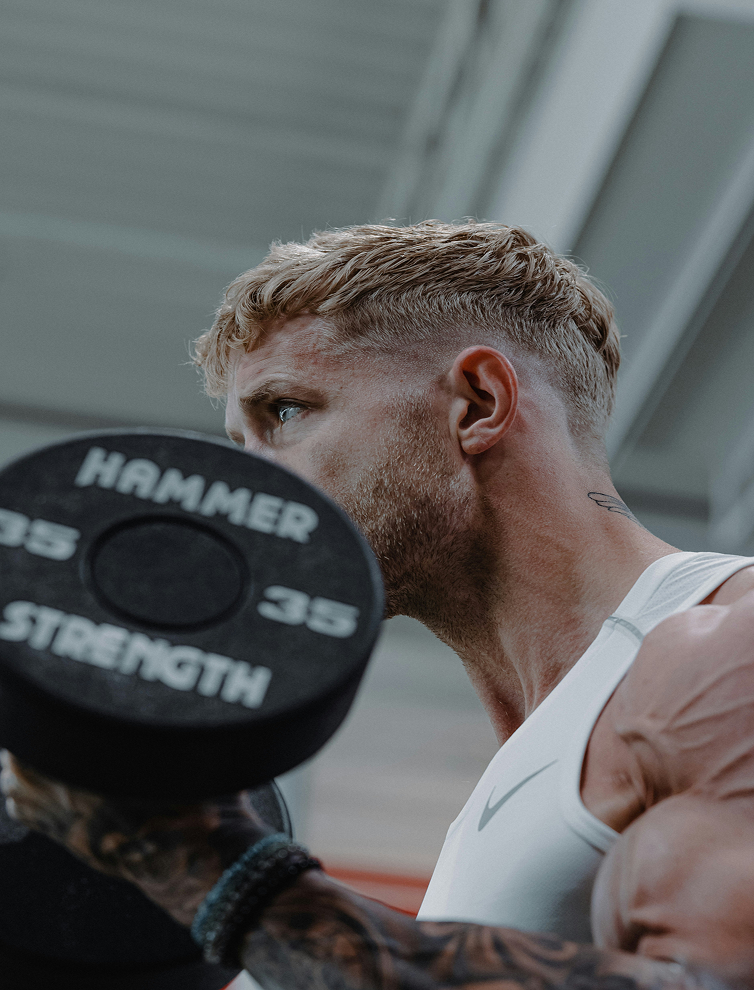The landscape of fitness monetization is undergoing a significant transformation, moving beyond traditional online courses and one-off content sales. In 2025, fitness influencers are increasingly recognizing the unparalleled potential of paid challenges that promise a small, tangible result within a short timeframe, typically 14 to 21 days. This innovative model serves as a highly effective funnel, converting engaged participants into high-ticket coaching clients or premium membership holders.
Platforms like CommuniPass are at the forefront of this shift, enabling influencers to build and launch these challenges with remarkable efficiency. The reported completion rates for these structured challenges, often soaring between 70% and 80%, dwarf the typical 5-10% completion rates of conventional online courses, representing a staggering 14X improvement in engagement. This article delves into why this model is becoming the best choice for fitness influencers in 2025, and how this trend is set to intensify in 2026, driven by evolving consumer preferences and the strategic integration of AI technology.
Introduction: The Evolution of Fitness Monetization
The digital fitness industry has matured rapidly, shifting from broad, generic content to highly specialized and results-oriented offerings. For fitness influencers, the challenge has always been not just to attract an audience, but to effectively convert that audience into paying clients for higher-value services. Traditional online courses, while offering scalability, often suffer from low completion rates, leading to diminished perceived value and limited conversion opportunities.
Enter the paid challenge: a focused, time-bound program designed to deliver a specific, achievable outcome. This model capitalizes on immediate gratification and the human desire for quick wins, building trust and demonstrating expertise in a compressed timeframe. The success of these challenges lies in their ability to foster deep engagement and community, setting the stage for a natural progression to more comprehensive, high-ticket offerings.
The strategic deployment of AI technology in optimizing these challenges, from personalized content delivery to predictive analytics for conversion, further solidifies their position as a leading monetization strategy. As we move into 2026, the integration of AI technology trends will continue to refine and enhance the efficacy of these challenge-based funnels, making them indispensable for any serious fitness professional.
What defines a successful paid challenge in this evolving landscape?
- Clear, Achievable Goals: Participants know exactly what small result they will achieve within the 14-21 day period.
- High Engagement Mechanisms: Daily check-ins, community interaction, and personalized feedback loops are crucial.
- Seamless Platform Integration: Tools like CommuniPass simplify the technical aspects, allowing influencers to focus on content and community.
- Strategic Upsell Path: A well-defined journey from challenge completion to high-ticket offer enrollment.
- Data-Driven Optimization: Utilizing analytics to refine challenge content and conversion strategies.
This approach addresses the core pain points of online education – lack of accountability and low completion – by creating an immersive, results-driven experience that naturally leads to higher-value engagements.
The Fitness Market Landscape in 2025: Why Challenges Thrive
The global fitness market is experiencing robust growth, creating an ideal environment for innovative digital solutions like paid challenges. Valued at an impressive $40.58 billion in 2024, the market is projected to expand to $42.81 billion in 2025, with a compound annual growth rate (CAGR) of 5.5% through 2033. This sustained expansion signals a strong consumer appetite for fitness products and services, as reported by Business Research Insights.
This growth is not merely in volume but also in consumer sophistication. The 2025 HFA Global Report highlights a 6% year-over-year membership increase and 8% revenue growth in the fitness sector in 2024, with 91% of operators anticipating further revenue gains in 2025. This optimism underscores a market ripe for new monetization models that cater to evolving consumer demands.
What are these evolving demands? Consumers in 2025 are increasingly prioritizing personalized and community-driven fitness experiences. This is evident in the success of boutique studios, which charge 2-4 times more than traditional gyms and earn approximately $774 per member annually, as noted by Wellness Creatives. This willingness to invest in premium, result-oriented fitness products directly supports the efficacy of short-term paid challenges as a funnel to higher-value services.
Furthermore, post-pandemic trends show a strong inclination towards strength training, wellness, and recovery services. Consumers are actively seeking measurable, quick-win results before committing to long-term programs, a behavioral shift that perfectly aligns with the 14-21 day challenge model. This strategic alignment with consumer preferences positions paid challenges as a highly effective entry point for fitness influencers looking to scale their impact and revenue.
Key market indicators supporting the rise of paid challenges:
- Market Growth: A continuously expanding global fitness market provides a larger audience base.
- Consumer Preference for Personalization: Demand for tailored experiences over generic content.
- Desire for Quick Wins: Short-term, tangible results appeal to modern consumers’ need for immediate gratification.
- Community Focus: The craving for shared experiences and accountability drives engagement.
- High-Value Service Acceptance: Consumers are willing to pay more for premium, results-driven offerings.

The Paid Challenge Advantage: 14X Higher Completion Rates
The most compelling argument for paid challenges over traditional online courses lies in their vastly superior completion rates. While online courses typically see completion rates ranging from a dismal 5% to 10%, paid challenges, particularly those on dedicated platforms, boast completion rates of approximately 70% to 80%. This represents a phenomenal 14-fold increase in participant engagement and follow-through.
This dramatic difference is not accidental; it’s a direct outcome of the inherent design and psychological principles embedded within the challenge model. Unlike passive online courses where participants can easily lose motivation or get overwhelmed by the sheer volume of content, paid challenges are structured to provide immediate feedback, accountability, and a clear finish line. The short duration (14-21 days) ensures that participants remain focused and committed, seeing tangible progress almost daily.
What contributes to these high completion rates?
- Defined Timeframe: A clear start and end date creates a sense of urgency and commitment.
- Specific, Achievable Goals: Participants are motivated by the promise of a small, tangible result.
- Built-in Accountability: Daily check-ins, community support, and leaderboards foster responsibility.
- Financial Commitment: The “paid” aspect increases perceived value and commitment, as people are more likely to follow through on something they’ve invested in.
- Community and Support: Interaction with peers and direct access to the influencer provides motivation and problem-solving.
This higher completion rate translates directly into increased trust and credibility for the influencer. When participants successfully achieve their small result, they are far more likely to trust the influencer’s expertise and be receptive to higher-ticket offers. It’s a powerful demonstration of value that a static online course often fails to deliver.
Consider the impact of this engagement on the influencer’s business:
- Enhanced Reputation: Successful challenge completions lead to positive testimonials and word-of-mouth referrals.
- Stronger Client Relationships: Active engagement builds deeper connections and loyalty.
- Higher Conversion Potential: Satisfied participants are pre-qualified leads for premium services.
- Reduced Refund Rates: High completion means fewer complaints and greater satisfaction.
- Improved Data for Optimization: More engaged users provide richer data for refining future offers.
The shift towards paid challenges is a strategic move that leverages human psychology and effective program design to maximize engagement and, ultimately, revenue for fitness influencers.
Leveraging CommuniPass: Simplifying Launch and Maximizing Engagement
The technical complexities of launching and managing an online program can be a significant barrier for many fitness influencers. This is where platforms like CommuniPass become invaluable. CommuniPass is specifically designed to streamline the process of building, launching, and managing paid challenges, allowing influencers to focus on content creation and community building rather than intricate technical setups.
CommuniPass offers a suite of features that directly support the high engagement and conversion rates seen in successful paid challenges. Its intuitive interface simplifies everything from payment processing and content delivery to community management and progress tracking. This ease of use is critical for influencers who may not have extensive technical teams or resources.
What specific features does CommuniPass offer to facilitate high completion rates and conversions?
- Integrated Payment Processing: Seamlessly collect payments and manage subscriptions for challenges.
- Content Delivery System: Easily upload and schedule daily workouts, meal plans, and instructional videos.
- Community Engagement Tools: Forums, chat features, and group functionalities to foster interaction and accountability.
- Progress Tracking & Analytics: Monitor participant engagement, completion rates, and identify areas for improvement.
- Automated Communication: Send reminders, motivational messages, and upsell offers directly through the platform.
The platform’s focus on community and accountability is particularly noteworthy. By providing dedicated spaces for participants to interact, share progress, and support each other, CommuniPass amplifies the motivational aspects of a challenge. This built-in social dynamic is a key differentiator from traditional online courses, which often lack a strong interactive component.
For fitness influencers, the ability to launch quickly without significant technical hurdles means faster time to market and the capacity to run multiple challenges concurrently or sequentially. This agility is crucial in a fast-paced digital environment where trends and consumer interests can shift rapidly. CommuniPass essentially acts as a powerful backend, freeing up the influencer to be the face and driving force of their community.
The reported 70%-80% completion rates for challenges on platforms like CommuniPass are a testament to their effectiveness in fostering engagement. This high level of interaction and success within the challenge creates a fertile ground for converting participants into higher-value clients, making CommuniPass a strategic partner for fitness influencers aiming for scalable growth.

Designing Your 14-21 Day Small Result Challenge
The success of a paid challenge hinges on its design. A 14-21 day timeframe is ideal because it’s long enough to deliver a noticeable, small result, but short enough to maintain participant motivation and prevent burnout. The key is to focus on a singular, specific outcome that is highly desirable to your target audience. This clarity of purpose is what attracts participants and drives completion.
When designing your challenge, consider these core principles:
- Hyper-Specificity: Instead of “get fit,” aim for “lose 5 lbs in 14 days,” “master 3 foundational yoga poses,” or “build a consistent 10-minute morning stretching routine.”
- Daily Actionable Steps: Break down the goal into small, manageable daily tasks. This prevents overwhelm and builds momentum.
- Progressive Overload (if applicable): Gradually increase intensity or complexity to ensure continuous improvement.
- Clear Instructions and Demonstrations: Provide high-quality video tutorials, written guides, and clear explanations for every exercise or task.
- Nutritional Guidance (Optional but Recommended): Offer simple, actionable dietary advice that complements the physical challenge.
Examples of effective 14-21 day challenge themes:
- “14-Day Core Strength Kickstart”: Focus on building foundational core strength with daily 10-minute routines.
- “21-Day Sugar Detox & Energy Boost”: Guide participants through eliminating refined sugars and incorporating whole foods, with a focus on increased energy levels.
- “14-Day Beginner Yoga Flexibility”: Introduce basic yoga poses and stretches to improve flexibility and reduce stiffness.
- “21-Day Home Workout Habit Builder”: Establish a consistent home workout routine with short, effective daily sessions.
Each of these examples promises a clear, small, and achievable result within the specified timeframe. The content should be delivered in bite-sized chunks, typically daily, to keep participants engaged and on track. This might include a short workout video, a daily meal prep tip, or a motivational message.
Furthermore, incorporate elements that foster accountability and community. This could involve:
- Daily Check-in Prompts: Ask participants to share their progress or challenges in a dedicated group.
- Leaderboards or Progress Trackers: Gamify the experience to encourage friendly competition.
- Live Q&A Sessions: Offer weekly live sessions to address questions and provide personalized support.
- Buddy System: Encourage participants to pair up for mutual accountability.
By meticulously designing a challenge that delivers a tangible small result, you build immense trust and demonstrate your value, making the transition to a high-ticket offer a natural and desirable next step for your participants.
Mastering the High-Ticket Conversion Strategy
The ultimate goal of a paid challenge is not just completion, but conversion to a high-ticket offer. This requires a well-thought-out strategy that seamlessly transitions participants from the challenge environment to your premium services. The key is to leverage the trust and positive results generated during the challenge to demonstrate the value of continued engagement.
The conversion process should begin even before the challenge concludes. Start hinting at the next steps and the deeper transformation available through your high-ticket offer. This creates anticipation and positions the high-ticket offer as the natural progression for those who want to achieve even greater results.
Effective strategies for high-ticket conversion include:
- Pre-Challenge Teasers: In your challenge promotion, subtly mention that this challenge is a stepping stone to a larger transformation.
- Mid-Challenge Value Proposition: During the challenge, share success stories of past high-ticket clients who started with a similar “small win.”
- Exclusive Post-Challenge Offer: Provide a limited-time, special offer or bonus for challenge completers to enroll in your high-ticket program. This creates urgency and rewards commitment.
- Personalized Outreach: For highly engaged participants, consider direct, personalized invitations to a discovery call or strategy session for your high-ticket offer.
- Testimonials and Case Studies: Showcase the journey of individuals who moved from a challenge to your high-ticket offer and achieved significant, long-term results.
What constitutes a high-ticket offer in this context?
- One-on-One Coaching: Personalized fitness, nutrition, or lifestyle coaching for a sustained period (e.g., 3-6 months).
- Exclusive Group Masterminds: Small, intimate groups focused on advanced training, business development for fitness professionals, or specific elite goals.
- Signature Programs: Comprehensive, multi-month programs that cover a broader spectrum of fitness and wellness, often with direct access to the influencer.
- In-Person Retreats or Workshops: High-value, immersive experiences that provide intensive coaching and networking opportunities.
The pricing of these high-ticket offers can range from several hundred to several thousands of dollars, reflecting the personalized attention, depth of transformation, and ongoing support provided. The success of the initial challenge serves as a powerful proof of concept, making the investment in a high-ticket offer feel justified and exciting for the participant.
Crucially, the high-ticket offer must align logically with the small result achieved in the challenge. If the challenge was about core strength, the high-ticket offer could be about building a complete strength program or preparing for a specific fitness event. This logical progression makes the upsell feel natural and value-driven, rather than purely transactional.

Real-World Success: Fitness Influencer Case Studies
The effectiveness of the paid challenge model, particularly as a funnel to high-ticket offers, is not merely theoretical. Leading fitness influencers have demonstrated its power through their own monetization strategies. While not all started with the exact 14-21 day challenge format, their journeys illustrate the principles of building trust through incremental results and leveraging community for high-value conversions.
Consider the journeys of these prominent figures:
- Kayla Itsines (Sweat App): Kayla’s journey began with PDF workout guides, offering accessible, clear programs that delivered tangible results. This built a massive, loyal following. She then scaled to the Sweat App, a subscription service offering comprehensive workout programs, meal plans, and community support. Her model demonstrates how incremental, well-packaged results build credibility and revenue before upselling higher-value memberships or products, as highlighted by CommuniPass. The Sweat App’s success underscores the power of community-driven, scalable digital products.
- Simeon Panda: A global fitness icon, Simeon Panda leveraged his strong personal brand into a diversified monetization strategy, including physical products (fitness apparel and supplements) and online coaching. His ability to convert a loyal following from smaller digital engagements into high-ticket sales, contributing to an estimated $17.5 million in annual revenue, showcases the potential of this funnel, according to FitBudd. His model emphasizes how a strong personal brand, combined with value-driven digital content, can lead to significant high-ticket conversions.
- Chloe Ting: While primarily known for her free fitness challenges on YouTube, Chloe Ting’s massive engagement illustrates the power of short, results-oriented challenges in building trust and audience. Her monetization through ad revenue and affiliate marketing, while different from direct high-ticket sales, proves that free or low-barrier challenges with clear short-term results are powerful lead generators. This model can easily be adapted to a paid challenge funnel, where the initial trust built through a free or low-cost challenge leads to a paid, more intensive program, and then to high-ticket coaching.
These case studies, while varied in their specific monetization paths, share common threads that are directly applicable to the paid challenge model:
- Focus on Tangible Results: All these influencers built their empires on delivering clear, measurable outcomes for their audience.
- Community Building: Whether through an app, social media, or dedicated platforms, fostering a sense of belonging and support was crucial.
- Scalable Content: Creating content that could reach a wide audience while still feeling personalized.
- Strategic Progression: Guiding their audience from initial engagement to higher-value offerings.
The success of these influencers provides a robust framework for how fitness professionals can leverage paid challenges to not only increase engagement but also significantly boost their revenue through high-ticket conversions in 2025 and beyond.
Step-by-Step Implementation Guide for Your First Challenge
Launching your first paid challenge can seem daunting, but with a structured approach and the right platform, it becomes a manageable and highly rewarding endeavor. This guide outlines the essential steps to build and launch a successful 14-21 day challenge designed for high-ticket conversions.
Step 1: Define Your Challenge Niche and Outcome
Before anything else, pinpoint the specific, small result your challenge will deliver. This should be a highly desirable outcome for a segment of your audience. Examples include “14-Day Beginner’s Plank Challenge,” “21-Day Sugar-Free Reset,” or “10-Minute Daily Mobility Boost.”
- Identify Audience Pain Points: What quick wins are your followers looking for?
- Specificity is Key: A clear, measurable outcome is crucial for marketing and participant motivation.
- Align with Your Expertise: Choose a niche where you can genuinely deliver value and results.
- Consider the Upsell: How does this small result naturally lead to your high-ticket offer?
Step 2: Structure Your 14-21 Day Content
Break down the challenge into daily, actionable steps. Each day should have a clear task, whether it’s a workout, a meal prep instruction, or a mindset exercise. Keep it concise and easy to follow.
- Daily Micro-Tasks: Design content that can be consumed and acted upon in 10-30 minutes per day.
- Content Formats: Mix short videos, downloadable PDFs, checklists, and audio guides.
- Progressive Design: Ensure the challenge builds logically, with increasing intensity or complexity if appropriate.
- Accountability Elements: Integrate daily check-ins, progress tracking, and opportunities for participants to share.
Step 3: Choose and Set Up Your Platform (CommuniPass Recommended)
A platform like CommuniPass simplifies the technical aspects, allowing you to focus on content and community.
- Account Creation: Sign up for CommuniPass and familiarize yourself with its features.
- Challenge Setup: Create your challenge program, upload content, and schedule daily releases.
- Payment Integration: Set up your pricing and payment gateway within the platform.
- Community Hub: Configure the community features (forums, chat groups) for participant interaction.
Step 4: Develop Your High-Ticket Offer and Conversion Path
Your high-ticket offer should be a natural extension of the challenge, offering deeper transformation and personalized support.
- Offer Design: Clearly define the scope, duration, and deliverables of your high-ticket program.
- Pricing Strategy: Determine the value and pricing that reflects the exclusivity and results of your premium offer.
- Conversion Touchpoints: Plan when and how you will introduce the high-ticket offer to challenge participants (e.g., mid-challenge webinar, post-challenge exclusive invite).
- Sales Assets: Prepare sales pages, discovery call scripts, and testimonials to support your conversion efforts.
Step 5: Promote Your Challenge
Leverage your existing audience to drive sign-ups for your paid challenge. Emphasize the specific, small result and the limited timeframe.
- Social Media Campaigns: Use engaging visuals and clear calls to action across all your platforms.
- Email Marketing: Announce the challenge to your email list, highlighting the benefits and urgency.
- Influencer Collaborations: Partner with other influencers for cross-promotion if relevant.
- Early Bird Offers: Create excitement with limited-time discounts or bonuses for early sign-ups.
Step 6: Launch, Engage, and Convert
Once the challenge begins, focus on active engagement and nurturing your participants towards the high-ticket offer.
- Daily Interaction: Be present in the community, answer questions, and provide encouragement.
- Monitor Progress: Use CommuniPass analytics to track engagement and identify struggling participants.
- Deliver Value: Ensure participants are achieving their small result, building trust and excitement.
- Execute Conversion Strategy: Roll out your high-ticket offer at the planned touchpoints, emphasizing the next level of transformation.
By following these steps, fitness influencers can effectively build a highly engaging and profitable paid challenge funnel, setting themselves up for significant growth in 2025 and beyond.

Optimizing Engagement and Retention within Challenges
Achieving those impressive 70-80% completion rates isn’t just about having a great platform; it’s about actively optimizing engagement and retention throughout the challenge. A highly engaged participant is not only more likely to complete the challenge but also to convert into a high-ticket client and become a vocal advocate for your brand. This requires a proactive and personalized approach.
What are the core pillars of engagement and retention optimization?
- Personalized Feedback Loops: While not one-on-one coaching for every participant, offer opportunities for personalized feedback, perhaps through Q&A sessions or reviewing submitted progress photos.
- Gamification Elements: Introduce points, badges, leaderboards, or small rewards for milestones achieved. This taps into intrinsic motivation and healthy competition.
- Consistent Communication: Regular check-ins, motivational messages, and reminders keep participants on track and feeling supported. This can be automated via platforms like CommuniPass.
- Peer-to-Peer Interaction: Facilitate connections between participants. Encourage them to form accountability buddies or small support groups within the challenge community.
- Addressing Roadblocks Proactively: Monitor common questions or struggles and provide solutions or additional resources before participants get discouraged.
Practical strategies for boosting engagement:
- Daily Micro-Wins: Frame each day’s task as a small victory. Celebrate these small wins publicly within the community.
- Live Sessions: Host weekly live Q&A sessions, mini-workshops, or motivational talks. This provides real-time interaction and a sense of direct connection with the influencer.
- User-Generated Content: Encourage participants to share their progress, challenges, and successes (e.g., photos, short videos) within the community or on social media using a specific hashtag.
- Surprise Bonuses: Occasionally drop in unexpected bonus content, a new recipe, or an extra short workout to keep excitement levels high.
- Dedicated Support Channel: Ensure participants know exactly where to go if they have questions or need help, making support easily accessible.
Data analytics from platforms like CommuniPass play a crucial role here. By tracking participation rates, content consumption, and drop-off points, influencers can gain valuable insights. For instance, if a particular day’s task sees a significant drop in engagement, it might indicate the task was too difficult, unclear, or uninspiring. This data allows for continuous refinement and improvement of future challenges.
Ultimately, optimizing engagement is about creating an immersive, supportive, and rewarding experience. When participants feel seen, supported, and successful, their commitment to the challenge and their receptiveness to your high-ticket offers will naturally increase. This focus on the participant journey is a cornerstone of the paid challenge model’s success.
Future Trends: Why Paid Challenges Will Dominate in 2026
The ascendancy of paid challenges in 2025 is not a fleeting trend; it’s a foundational shift in how fitness influencers will monetize their expertise and build lasting relationships with their audience. Looking ahead to 2026, several key factors will solidify the dominance of this model, driven by evolving consumer behaviors, technological advancements, and the inherent advantages of the challenge format.
Why will paid challenges continue to thrive and expand in 2026?
- Increased Demand for Accountability: As the digital fitness space becomes more saturated, consumers will actively seek programs that offer built-in accountability and support, which challenges inherently provide.
- Preference for Micro-Learning and Quick Wins: The modern consumer has a shorter attention span and prefers immediate, tangible results over long, drawn-out courses. Challenges cater perfectly to this desire for “micro-learning” and quick successes.
- Rise of Hyper-Niche Challenges: Influencers will increasingly specialize, offering challenges for very specific demographics or goals (e.g., “Postpartum Core Recovery Challenge,” “Vegan Muscle Building Challenge”). This hyper-personalization will drive higher engagement and conversion.
- Technological Advancements: Platforms like CommuniPass will continue to evolve, offering more sophisticated tools for personalization, analytics, and community management, making it even easier for influencers to scale.
- AI Technology Integration: The application of AI technology will become more sophisticated, enabling personalized content delivery, predictive analytics for drop-off risks, and automated, intelligent feedback, further enhancing challenge effectiveness.
The trend towards short, immediate-result challenges feeding high-ticket sales is expected to intensify in 2026 as market competition grows and consumers demand more personalized experiences. This is not just about fitness; it’s a broader shift in digital education and coaching, where active participation and demonstrable progress are valued above passive consumption.
Consider the implications for fitness influencers:
| Feature | Traditional Online Courses | Paid Challenges (14-21 Days) | 2026 Trend Outlook |
|---|---|---|---|
| Completion Rate | 5-10% | 70-80% | Challenges maintain high rates; courses struggle. |
| Engagement Level | Passive, self-paced | Active, community-driven | Engagement becomes paramount for success. |
| Time to Result | Long, often undefined | 14-21 days (small, tangible) | Consumers demand faster, clearer results. |
| Conversion to High-Ticket | Low, indirect | High, direct funnel | Challenges become primary high-ticket lead source. |
| Tech Complexity (for Influencer) | Moderate to High | Low (with platforms like CommuniPass) | Platforms simplify, enabling more creators. |
| Market Demand | Stagnating/Declining | Growing rapidly | Demand shifts decisively towards interactive models. |
The data clearly indicates a strong trajectory for paid challenges. Fitness influencers who embrace this model early and integrate AI technology solutions will be best positioned to capture market share, build highly engaged communities, and scale their businesses effectively in the coming years. This isn’t just a strategy; it’s the future of digital fitness monetization.

AI Technology in Paid Challenges: Enhancing Personalization and Efficiency
The integration of AI technology is rapidly transforming various industries, and digital fitness is no exception. For paid challenges, AI technology offers unprecedented opportunities to enhance personalization, optimize content delivery, and streamline operational efficiencies, ultimately contributing to even higher completion and conversion rates. As AI technology trends continue to evolve, its role in these challenges will become increasingly sophisticated.
How can AI technology be leveraged within the paid challenge model?
- Personalized Content Delivery: AI algorithms can analyze participant data (e.g., fitness level, goals, progress, reported challenges) to dynamically adjust daily workouts, suggest alternative exercises, or recommend specific nutritional advice tailored to individual needs. This moves beyond a one-size-fits-all approach.
- Predictive Analytics for Drop-Offs: AI technology solutions can identify patterns in participant behavior that indicate a high risk of disengagement or drop-off. This allows influencers to intervene proactively with targeted motivational messages, support, or modified tasks, significantly boosting retention.
- Automated Feedback and Coaching: While not replacing human coaching, AI-powered chatbots or virtual assistants can provide instant feedback on form (via video analysis), answer common questions, or offer encouragement, providing 24/7 support that scales.
- Optimized Scheduling and Reminders: AI can determine the optimal time to send reminders or motivational messages based on individual participant engagement patterns, ensuring maximum impact.
- Content Creation Assistance: AI tools can assist influencers in generating diverse content variations, such as different workout routines for various fitness levels, or personalized meal plans based on dietary preferences.
The application of AI technology best practices ensures that these integrations are effective and ethical. Data privacy and transparency regarding AI usage are paramount to maintaining participant trust. The goal is to augment the human touch, not replace it, providing a more tailored and effective experience for each individual.
Examples of AI technology in action within challenges:
- Adaptive Workout Plans: An AI system adjusts the number of reps, sets, or exercise variations based on a participant’s daily performance and reported energy levels.
- Nutrition Recommendations: AI suggests personalized meal ideas or grocery lists based on dietary restrictions, caloric needs, and the challenge’s specific goals.
- Sentiment Analysis: AI analyzes community forum posts to gauge overall participant sentiment, flagging individuals who might be struggling emotionally or losing motivation.
- Chatbot Support: A chatbot answers frequently asked questions about exercises, nutrition, or challenge rules, freeing up the influencer’s time for more complex interactions.
As AI technology continues to advance, its integration into paid challenges will become a critical differentiator. Influencers who embrace these AI technology strategies will be able to offer a level of personalization and support that was previously unattainable, solidifying their position as leaders in the digital fitness space and driving even higher conversion rates to their high-ticket offers.
Avoiding Common Pitfalls and Maximizing ROI
While the paid challenge model offers immense potential, there are common pitfalls that fitness influencers must navigate to maximize their return on investment (ROI) and ensure long-term success. Awareness of these challenges and proactive strategies to mitigate them are crucial for sustainable growth.
What are the typical mistakes to avoid?
- Lack of Specificity: A vague challenge goal (“get healthy”) will lead to low enrollment and poor completion. Participants need a clear, tangible outcome.
- Overwhelm: Providing too much content or overly complex tasks can quickly lead to participant burnout and drop-off. Keep it simple and actionable.
- Insufficient Support: Neglecting the community aspect or failing to provide timely answers to questions will erode trust and engagement.
- Weak Upsell Strategy: Assuming participants will automatically convert without a clear, value-driven high-ticket offer and a strategic conversion path.
- Ignoring Analytics: Not tracking engagement, completion rates, and conversion metrics means missing opportunities for optimization and improvement.
Strategies to maximize ROI:
- Pre-Launch Validation: Before building the entire challenge, survey your audience to confirm demand for your specific challenge idea and its promised outcome.
- Pilot Program: Run a small, beta version of your challenge with a select group to gather feedback and iron out kinks before a full launch.
- Automate Where Possible: Leverage platforms like CommuniPass for automated content delivery, reminders, and basic community management to save time and resources.
- Focus on Testimonials: Actively collect testimonials and success stories from challenge completers. These are powerful social proof for both the challenge and your high-ticket offer.
- Refine Your High-Ticket Offer: Continuously improve your premium services based on feedback from challenge participants and high-ticket clients. Ensure it truly solves a deeper problem.
Another critical aspect is managing expectations. While 70-80% completion rates are achievable, they require consistent effort and engagement from the influencer. It’s not a set-it-and-forget-it model. The personal connection and active leadership from the influencer are key drivers of success.
Furthermore, consider the pricing strategy for your challenge. It should be accessible enough to attract a broad audience, but significant enough to ensure commitment. A low-cost entry point (e.g., $27-$97) often works well, as it filters out tire-kickers while still being an easy decision for motivated individuals. This initial investment also makes the subsequent high-ticket offer seem more reasonable in comparison to the value received.
By proactively addressing these potential pitfalls and implementing strategies for continuous improvement, fitness influencers can ensure their paid challenges are not just successful one-off events, but powerful, sustainable engines for business growth and high-ticket client acquisition.
Frequently Asked Questions (FAQ)
How do I choose the right “small result” for my 14-21 day challenge?
To choose the right small result, identify a specific, measurable, achievable, relevant, and time-bound (SMART) outcome that your target audience deeply desires. This could be “lose 5 pounds,” “run 1 mile without stopping,” or “master 3 basic yoga poses.” It must be a clear win within 14-21 days.
- Audience Research: Poll your followers or analyze common questions to understand their immediate pain points.
- Specificity: Avoid vague goals like “get fit”; instead, focus on concrete achievements.
- Achievability: Ensure the result is realistic for a beginner or intermediate in the given timeframe.
- Alignment: The small result should naturally lead into your higher-ticket offer.
What are the key differences between a paid challenge and a traditional online course?
Paid challenges are short, time-bound, and results-oriented, focusing on a single, tangible outcome with high accountability and community interaction, leading to 70-80% completion rates. Traditional online courses are typically longer, self-paced, cover broader topics, and often lack direct accountability, resulting in 5-10% completion rates.
- Duration: Challenges are 14-21 days; courses can be weeks or months.
- Focus: Challenges target a specific “small win”; courses offer comprehensive knowledge.
- Engagement: Challenges are highly interactive; courses are often passive.
- Completion: Challenges boast significantly higher completion rates due to structure and accountability.
Why should fitness influencers use a platform like CommuniPass for their challenges?
Fitness influencers should use CommuniPass because it simplifies the technical aspects of launching and managing challenges, including payment processing, content delivery, and community engagement tools. This allows influencers to focus on content and coaching, maximizing efficiency and participant experience, which contributes to high completion rates.
- Ease of Use: Streamlined setup and management.
- Integrated Features: All-in-one solution for payments, content, and community.
- High Engagement Tools: Features designed to foster accountability and interaction.
- Analytics: Provides insights into participant progress and challenge performance.
When is the best time to introduce the high-ticket offer to challenge participants?
The best time to introduce the high-ticket offer is towards the end of the challenge, typically in the last few days or immediately upon completion. This timing leverages the participant’s positive experience and momentum from achieving their small result, making them receptive to continuing their transformation with a more comprehensive program.
- Build Trust First: Allow participants to experience success and build trust in your methods.
- Create Anticipation: Hint at the next steps or deeper transformation throughout the challenge.
- Exclusive Offer: Present the high-ticket offer as a special opportunity for challenge completers.
- Leverage Momentum: Capitalize on the excitement and motivation from achieving the challenge goal.
How can AI technology enhance the effectiveness of a paid challenge?
AI technology can enhance paid challenges by enabling personalized content delivery (e.g., adaptive workouts), predicting potential drop-offs for proactive intervention, providing automated feedback, and optimizing communication timing. These AI technology solutions lead to a more tailored and engaging experience, boosting completion and conversion rates.
- Personalization: Tailoring content and recommendations to individual participant needs.
- Predictive Analytics: Identifying at-risk participants to offer timely support.
- Automated Assistance: Providing instant answers and basic coaching through chatbots.
- Efficiency: Streamlining operations and optimizing communication for influencers.
What is a typical price range for a 14-21 day paid challenge?
A typical price range for a 14-21 day paid challenge is generally between $27 and $97. This price point is low enough to be an easy decision for potential participants, yet high enough to ensure a level of commitment and filter out those who are not serious. The exact price depends on the perceived value, the influencer’s brand, and the specific outcome promised.
- Accessibility: Keep the price point low enough to attract a broad audience.
- Commitment: Ensure the price is high enough to signify value and encourage follow-through.
- Value Proposition: Price should reflect the tangible result and support provided.
- Market Positioning: Consider what competitors are charging for similar short-term programs.
How important is community in a paid challenge, and how can I foster it?
Community is critically important in a paid challenge, as it provides accountability, motivation, and a sense of belonging, directly contributing to high completion rates. Foster it by providing dedicated forums or chat groups, encouraging peer-to-peer interaction, hosting live Q&A sessions, and celebrating collective and individual successes.
- Dedicated Space: Use platform features for group discussions and sharing.
- Influencer Presence: Actively engage in the community, answering questions and offering encouragement.
- Peer Support: Encourage participants to connect, form accountability partners, and cheer each other on.
- Shared Experience: Highlight the collective journey and celebrate milestones together.
What kind of high-ticket offers typically follow a paid challenge?
High-ticket offers following a paid challenge typically include one-on-one coaching, exclusive group masterminds, comprehensive signature programs, or in-person retreats. These offers provide deeper transformation, personalized support, and extended engagement, building upon the initial success and trust established during the challenge.
- Personalized Coaching: Direct, individualized guidance for long-term goals.
- Group Masterminds: Small, high-value groups for advanced training or specific outcomes.
- Signature Programs: Multi-month, holistic programs with extensive content and support.
- Immersive Experiences: Retreats or workshops offering intensive, hands-on coaching.
How do I measure the success of my paid challenge beyond completion rates?
Beyond completion rates, measure success by tracking participant testimonials and feedback, conversion rates to your high-ticket offer, overall revenue generated, and participant engagement metrics (e.g., daily active users, content consumption). Positive word-of-mouth and repeat enrollments for future challenges also indicate success.
- Conversion Rate: Percentage of challenge completers who enroll in your high-ticket offer.
- Participant Satisfaction: Surveys, testimonials, and direct feedback.
- Engagement Metrics: Daily logins, content views, community participation.
- Revenue & Profitability: Overall financial success of the challenge and subsequent upsells.
What are the common pitfalls to avoid when running a paid challenge?
Common pitfalls include having a vague challenge goal, overwhelming participants with too much content, neglecting community support, failing to have a clear high-ticket upsell strategy, and not analyzing performance data. Avoiding these ensures higher engagement, completion, and ultimately, better conversion rates.
- Vague Goals: Lack of a specific, tangible outcome.
- Content Overload: Too much information or too many tasks per day.
- Lack of Support: Insufficient interaction or responsiveness to participants.
- Poor Upsell: No clear path or compelling offer for continued engagement.
- Ignoring Data: Not using analytics to refine and improve future challenges.
How can I promote my paid challenge effectively to attract participants?
Promote your paid challenge effectively by leveraging your existing social media audience and email list. Emphasize the specific, tangible small result participants will achieve, highlight the limited duration, and create urgency with early bird offers. Use engaging visuals and compelling testimonials to showcase the transformation.
- Highlight the Outcome: Focus on the specific “win” participants will gain.
- Leverage Social Proof: Share testimonials from past participants or early testers.
- Create Urgency: Use limited enrollment periods or special launch bonuses.
- Multi-Channel Promotion: Utilize Instagram, TikTok, Facebook, email newsletters, and even YouTube.
What kind of content should I include in a 14-21 day challenge?
Content for a 14-21 day challenge should be daily, bite-sized, and actionable. Include short workout videos, simple meal plans or recipes, daily motivational messages, educational tips related to the challenge goal, and prompts for reflection or progress sharing. Focus on clarity and ease of implementation.
- Daily Action Items: Clear, concise tasks for each day.
- Video Tutorials: Short, high-quality demonstrations for exercises or techniques.
- Downloadable Resources: Checklists, trackers, or simple meal guides.
- Motivational Content: Daily messages or short audio clips to keep spirits high.
How does the fitness market outlook for 2025-2026 support the paid challenge model?
The fitness market outlook for 2025-2026, with its projected growth to $42.81 billion and consumer preference for personalized, community-driven, and quick-win experiences, strongly supports the paid challenge model. This trend indicates a market receptive to short, results-focused programs that build trust and lead to higher-value offerings.
- Market Growth: An expanding market means more potential participants.
- Consumer Demand: Preference for personalization and quick, tangible results.
- Boutique Model Success: Willingness to pay more for specialized, results-oriented services.
- Influencer Trust: Challenges build credibility, essential for high-ticket conversions.
Can I run multiple challenges simultaneously or sequentially?
Yes, you can absolutely run multiple challenges simultaneously or sequentially. Many influencers use a tiered approach, offering different challenges for various fitness levels or goals. Running them sequentially allows you to funnel participants from one challenge to the next, building a continuous journey towards your high-ticket offer.
- Tiered Approach: Offer beginner, intermediate, and advanced challenges.
- Sequential Funnel: Guide participants through a series of challenges, each building on the last.
- Seasonal Challenges: Align challenges with specific times of the year (e.g., “Summer Shred,” “Holiday Health”).
- Platform Efficiency: Platforms like CommuniPass make managing multiple challenges feasible.
What role do testimonials play in the success of paid challenges and high-ticket conversions?
Testimonials play a crucial role by providing powerful social proof. Successful challenge completers sharing their positive experiences and results build immense trust and credibility for both the challenge and your high-ticket offers. They demonstrate the tangible value you provide, making it easier to attract new participants and convert them into premium clients.
- Builds Trust: Real-life success stories are highly convincing.
- Demonstrates Value: Shows prospective clients the results they can expect.
- Attracts New Leads: Compelling testimonials serve as powerful marketing assets.
- Reinforces Credibility: Validates your expertise and coaching methods.
How can fitness influencers ensure their high-ticket offer aligns with the challenge outcome?
Ensure alignment by designing your high-ticket offer as a natural progression from the challenge’s small result. If the challenge helps with basic strength, the high-ticket offer could be advanced strength training or competition prep. The high-ticket offer should solve a deeper, more complex problem that the challenge only partially addressed, offering the “next level” of transformation.
- Logical Progression: The high-ticket offer should be the next logical step for someone who completed the challenge.
- Deeper Transformation: It should address more complex problems or provide more significant results.
- Continuity: Maintain consistent messaging and methodology between the challenge and the high-ticket offer.
- Client Journey Mapping: Visualize the entire client journey from initial challenge to long-term high-ticket engagement.
Conclusion: Seizing the Future of Fitness Monetization
The shift towards paid challenges represents a pivotal moment for fitness influencers. By offering a concise, results-driven experience, influencers can achieve unprecedented engagement and completion rates, far surpassing those of traditional online courses. This model not only builds immense trust and credibility but also serves as an incredibly effective funnel for converting engaged participants into high-ticket clients for personalized coaching or premium programs.
Platforms like CommuniPass are democratizing this approach, making it accessible for influencers of all sizes to design, launch, and manage these highly effective challenges without significant technical overhead. As the fitness market continues its robust growth into 2026, fueled by consumer demand for personalized, community-driven, and quick-win experiences, the dominance of the paid challenge model will only strengthen. The strategic integration of AI technology will further refine and personalize these offerings, solidifying their position as the best choice for sustainable growth and monetization.
For fitness influencers looking to scale their impact and revenue, embracing the paid challenge model is not just an option; it’s a strategic imperative. By focusing on delivering tangible small results, fostering vibrant communities, and creating seamless pathways to high-ticket offers, influencers can build thriving, loyal client bases and secure their position at the forefront of the evolving digital fitness landscape.








